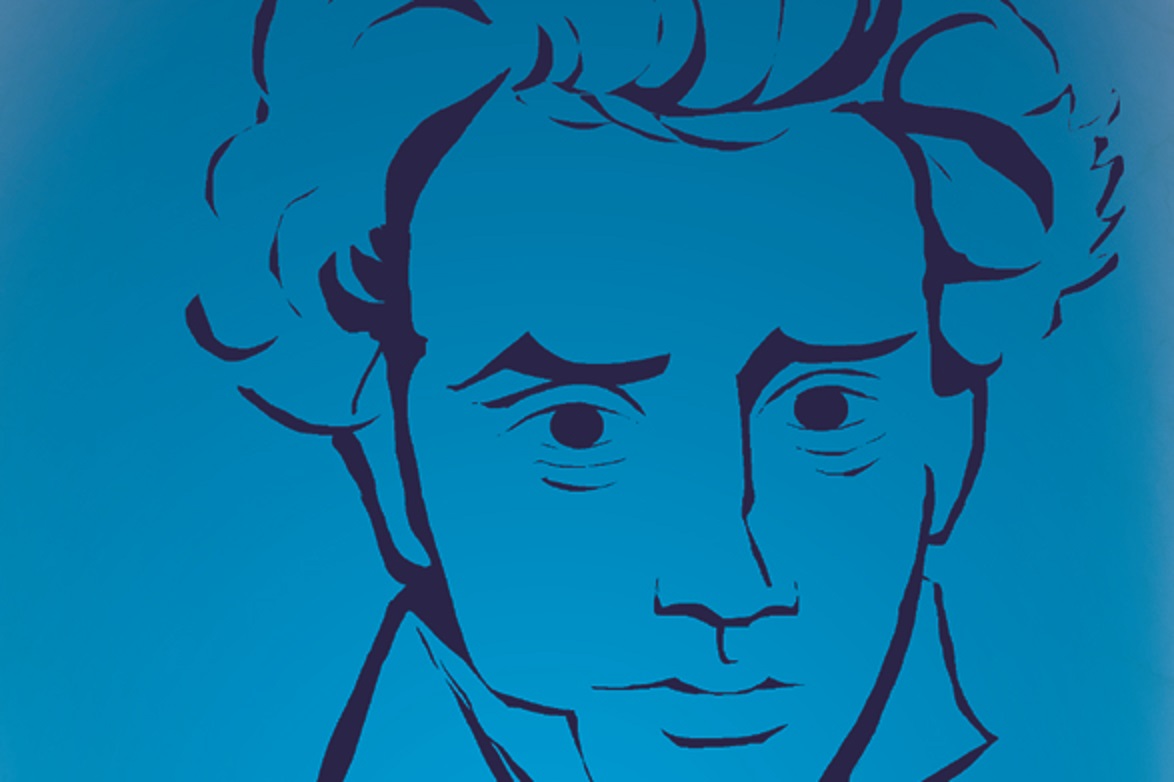When it came to love, Kierkegaard had it all figured out.
Unfortunately, like many existential philosophers, he did not believe in paragraph breaks, which is in part why few people turn to his writing for practical relationship advice.
Lo and behold, his notions of love actually have unparalleled real-world applications. Take a look at this memorable tale from Fear and Trembling (1843).
The Philosopher’s Fable
Once upon a time, there were three men who were madly in love with a beautiful princess.
However, each man recognized that the match was impossible. The princess was not attainable, and the love was not meant to be—not in this life, not on this earth.
Sad ending? It depends on which one of these men you were. Here were the reactions of the three thwarted lovers:
- The first man was the Slave of the Finite (whom Kierkegaard calls one of the “the frogs in life’s swamp.”) Upon discovering that he could never have the princess, he screamed and screamed, incapable of overcoming his pain. “Such a love is foolishness,” he cried. “The rich brewer’s widow is a match fully as good and respectable.” In other words, it was time to move onto Princess #2.
- The second knight – The Knight of Infinite Resignation– handled the situation more elegantly. He was – you guessed it – infinitely resigned to the prospect of being forever separated from his princess. However, since he was a brave knight and not a cowardly fool, he was unafraid to keep her alive in his memory forever, despite his own pain:
He feels a blissful rapture in letting love tingle through every nerve, and yet his soul is as solemn as that of the man who has drained the poisoned goblet and feels how the juice permeates every drop of blood – for this instant is life and death.”
3.) The third Knight – The Knight of Infinity – went one step further. Even though he knew that he would never attain his love, he said:
Nevertheless I have faith that I will get her—that is, by virtue of the absurd, by virtue of the fact that for God all things are possible.”
Believing in the possibility of an impossibility defined the knight’s love.
And with that spectacular contradiction, we enter Soren Kierkegaard’s paradoxical world of love and faith.
The Leap of Faith
Kierkegaard recognized that there was a central paradox of Christianity – it was, in many ways, not based on reason. How was it that God – infinite, eternal – could also be temporal and human in the form of Jesus Christ?
To him, the contradiction was not insurmountable; on the contrary, it became crucial to Kierkegaard’s philosophy. We should not have faith because of reason; rather, we should have faith in spite of reason. We must continually and consciously perpetuate a belief in the absurd. Only then can we achieve true faith—which, in the end, is all that makes us a real “self.”
It is easy to apply Kierkegaard’s ideas of faith to love. Love, like faith, requires effort and constant reaffirmation. How many times have poets labeled love as irrational, unpredictable, and absurd? Yet how many times have they insisted that it was worth believing in?
Love is, in some ways, an assault against our rational brains. Yet, as with everything that requires a belief in something are larger than ourselves, it requires a leap of faith.
A Transcendent Purpose
 Kierkegaard viewed love as a condition that was inextricable from God (God was love). Therefore, love was dependent upon self-sacrifice. The lover was an invisible part of the equation; ideally, the only forces that existed in a loving relationship were Love itself and the God who created it.
Kierkegaard viewed love as a condition that was inextricable from God (God was love). Therefore, love was dependent upon self-sacrifice. The lover was an invisible part of the equation; ideally, the only forces that existed in a loving relationship were Love itself and the God who created it.
This idea is nothing new. Whether you’re religious or not, the concept of self-sacrifice in relationships carries a valuable lesson. Selflessness is crucial to any form of love—religious, Platonic, or romantic. Only when you focus on something other than yourself – do you achieve love in any “true” sense.
Kierkegaard strongly believed that love could only be known through an infinite faith in God. But there is a non-religious translation, too: endless, selfless commitment could bring the greatest fulfillment.
Happily ever after?
As long as we’re speaking in paradoxes, let’s add one more to reach the moral of this story: making yourself happy actually means not making yourself happy.
Consider this parting thought, taken from Kierkegaard’s Works of Love:
No, the one who in love forgets himself, forgets his suffering, in order to think of someone else’s, forgets all his misery in order to think of someone else’s, forgets what he himself loses in order lovingly to bear in mind someone else’s loss, forgets his own advantage in order to lovingly to think of someone else’s – truly, such a person is not forgotten.”
In other words, perfect love requires perfect selflessness—a state of being in which one’s own happiness, dreams and ambitions are inconsequential to those of another person. The most gallant (and irresistible) knight is not the one who promotes himself to attain the object of his desire; rather, he is the one who barely needs to be seen at all. Ironically, only by effacing himself is his influence the strongest.
The above may seem like an impossible state to achieve. But if Kierkegaard’s Knight of Infinity teaches us anything, it is that with enough faith and conviction, even the impossible is within our reach—and true love may not be so far off after all.






